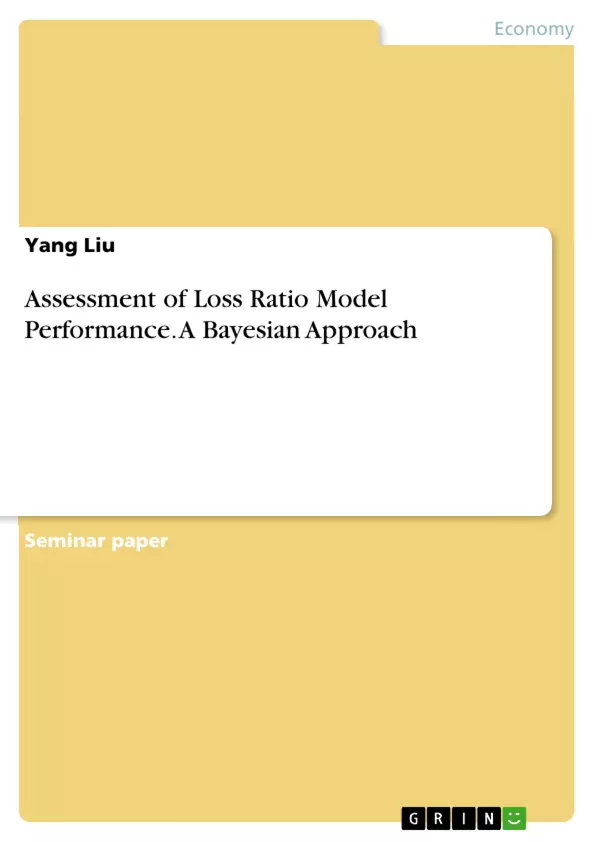“The model is wrong!” so it is determined. All of the estimated output using the model becomes un-reliable immediately. And so is every other result calculated using the un-reliable output. So what is the impact of the model being “wrong” in the later calculations? To address this question. This paper present a Bayesian approach that provides a quantitative assessment for the impact on downstream results calculated using the un-reliable estimates. Section 1 detail the practical challenge in the financial industry and discuss why this is important. Section 2 start the discussion with description of the overall framework for this Bayesian approach, introducing and defining each individual component. Then sections 3 and 4 carry on to discuss the prior and likelihood distributions, respectively. Section 5 then obtain the target posterior distribution by applying the Bayesian posterior update using obtained prior and likelihood results. Then conditioning on value of the un-reliable estimate already in place in the portfolio, the density distribution obtained can be used to update the output of the “wrong” model and assess the impact in further calculation. This approach bridges the practitioners’ initial expectations with the model performance and provides an intuitive quantitative assessment for the impact in the follow-up calculations which are largely affected by the un-reliable estimate. The presented approach is the first in literature to raise the concern of uncertain impact caused by “wrong” models and propose solution to assess the impact. Note that the abuse of the word wrong in quotation marks is an exaggeration of the uncertainty involved, in practice, impact analysis could be requested at any level of uncertainty.
Inhaltsverzeichnis (Table of Contents)
- Abstract
- Introduction
- Initial Expectation
- Modelling Effort
- The Prior Distribution
Zielsetzung und Themenschwerpunkte (Objectives and Key Themes)
This paper presents a Bayesian approach to assessing loss ratio model performance, focusing on user expectations for loss estimation models. It aims to bridge the gap between practitioners' insights and model performance, providing an intuitive quantitative assessment of model performance in monetary terms.
- Quantifying model performance in relation to user expectations
- Applying Bayesian methods to model assessment
- Analyzing the impact of new observations on prior assumptions
- Illustrating the modeling effort to achieve development targets
- Bridging the gap between statistical model evaluation and business practitioner understanding
Zusammenfassung der Kapitel (Chapter Summaries)
- Abstract: Introduces a Bayesian approach to assess the performance of loss estimation models based on user expectations, providing a quantitative assessment linked to the impact of new observations on prior assumptions.
- Introduction: Highlights the importance of loss ratio models in finance and discusses how they are used in various areas. The paper emphasizes the need to link modeling targets with expected performance during model development and review.
- Initial Expectation: Discusses how user expectations play a role in model assessment and describes how practitioners express their tolerance for estimation errors using a 5-bucket LGD scale.
- Modelling Effort: Demonstrates the modeling effort through graphs, illustrating how the model groups similar customers into ELR buckets and how the model-ordered OLR data aligns with user expectations.
- The Prior Distribution: Discusses the initial modeled/observed distribution and the properties of the mixture distribution across the ELR buckets. It highlights the assumption of a bucketed Inflated Double Beta distribution for model output.
Schlüsselwörter (Keywords)
This paper focuses on the application of Bayesian methods to assess the performance of loss ratio models in the finance industry. Key terms include loss ratio model, Bayesian approach, model validation, user expectation, mixture distribution, estimated loss ratio, observed loss ratio, and prior and posterior distributions.
- Quote paper
- Yang Liu (Author), 2017, Assessment of Loss Ratio Model Performance. A Bayesian Approach, Munich, GRIN Verlag, https://www.grin.com/document/372254



